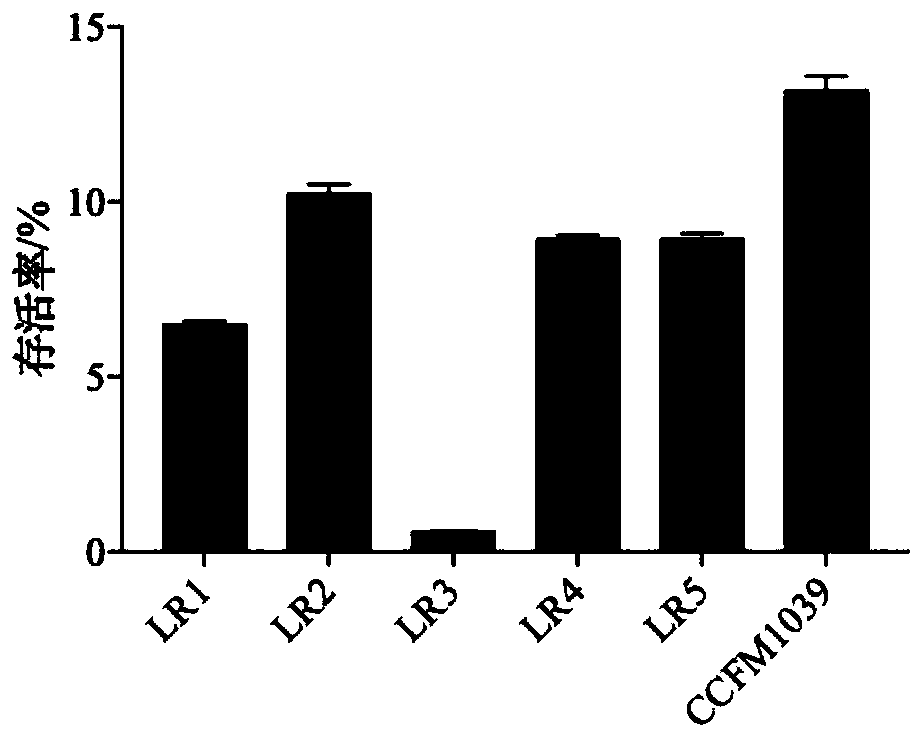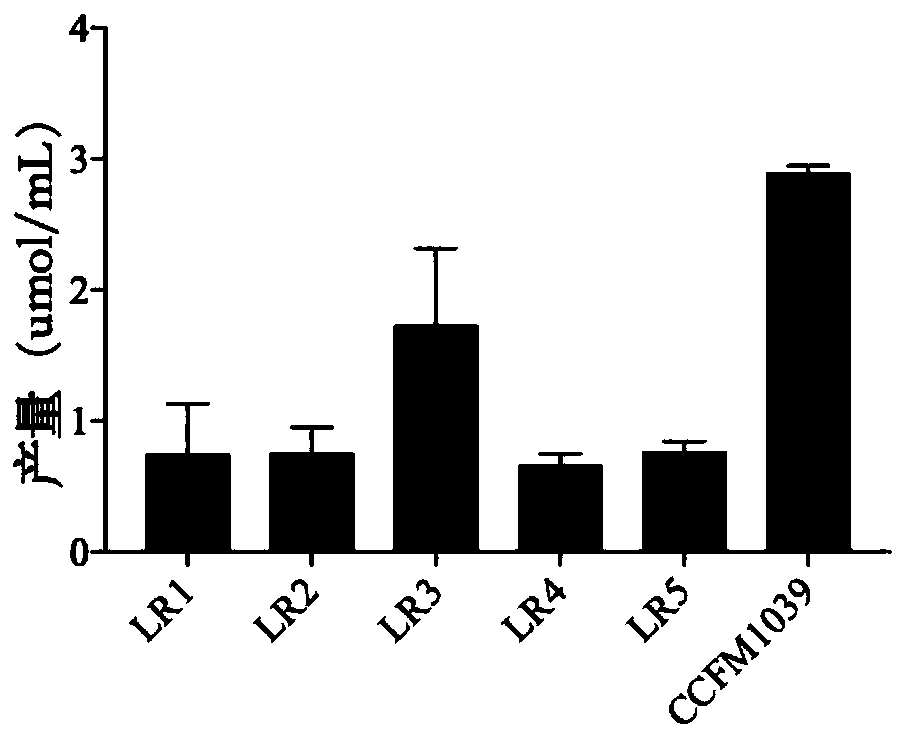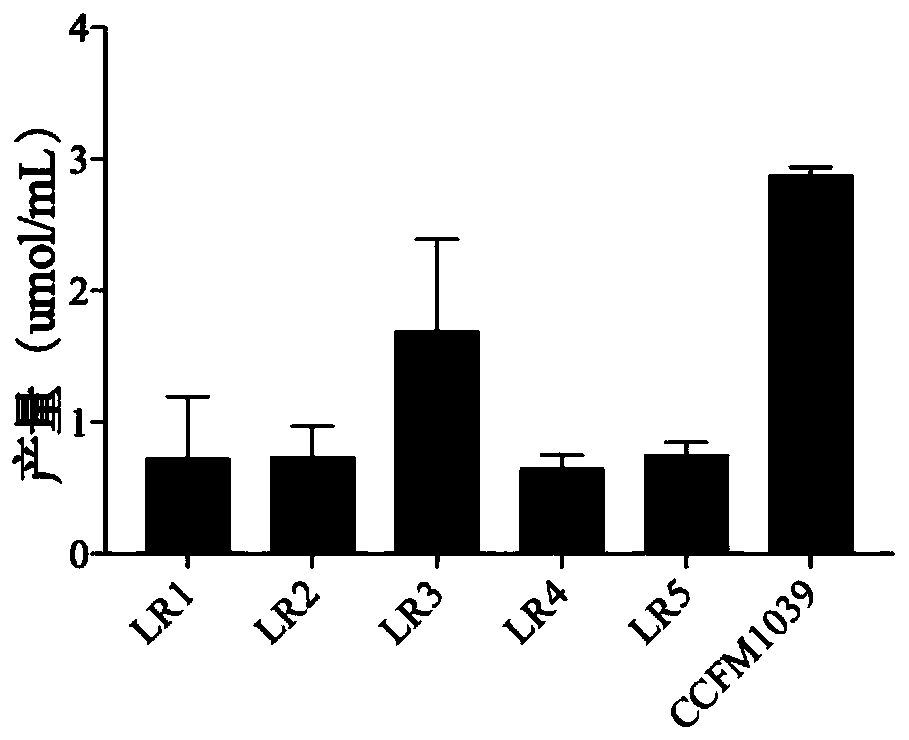Lactobacillus rhamnosus capable of regulating and controlling relative abundance of acinetobacter in intestinal tracts
A technology of Lactobacillus rhamnosus and intestinal health, applied in the field of microorganisms, can solve the problems of hindering the treatment of Acinetobacter infection and the lack of pertinence of Acinetobacter, achieve good oligosaccharide utilization ability, improve intestinal health, and have great application prospects Effect
- Summary
- Abstract
- Description
- Claims
- Application Information
AI Technical Summary
Problems solved by technology
Method used
Image
Examples
Embodiment 1
[0048] Example 1: Screening and strain identification of Lactobacillus rhamnosus
[0049] 1. Screening
[0050] Taking the feces of newborns from the Department of Obstetrics and Gynecology of Huaxing Hospital in Dagang, Tianjin as samples, they were serially diluted to 10 times with sterile normal saline. -6 , and then take 100 μL dilution gradient of 10 -4 、10 -5 、10 -6 Spread the diluted liquid on the MRS solid medium, culture at 37°C for 48 hours, observe and record the colony shape; pick the colonies of different shapes on the MRS solid medium to separate them by streaking, and after culturing at 37°C for 48 hours, pick again Take the single colonies of different shapes on the MRS solid medium and separate them by streaking until the pure single colonies with the same shape are obtained; pick the pure colonies on the MRS solid medium and inoculate them in 5mL MRS liquid medium, and incubate at 37°C for 18h; Take 1mL of the bacterial solution in a sterile centrifuge tu...
Embodiment 2
[0053] Embodiment 2: the cultivation of Lactobacillus rhamnosus
[0054] Lactobacillus rhamnosus (Lactobacillus rhamnosus) CCFM1039 was inoculated on MRS solid medium and cultured at 37°C for 48 hours. The colonies were observed and found to be round, white, opaque and smooth.
Embodiment 3
[0055] Example 3: Tolerance of different Lactobacillus rhamnosus to simulated gastrointestinal fluid
[0056] Specific steps are as follows:
[0057] 1. Tolerance of different Lactobacillus rhamnosus to simulated gastric juice
[0058] Lactobacillus rhamnosus (Lactobacillus rhamnosus) CCFM1039, Lactobacillus rhamnosus (Lactobacillus rhamnosus) LR1, Lactobacillus rhamnosus LR2, Lactobacillus rhamnosus LR3, Lactobacillus rhamnosus (Lactobacillus rhamnosus) LR4 and Lactobacillus rhamnosus (Lactobacillus rhamnosus) LR5 were respectively inserted into MRS liquid medium and cultured at 37°C for 18 hours, then the cells were collected by centrifugation, and the collected cells were washed with normal saline, washed After the end, the cells were collected by centrifugation again, and the collected cells were resuspended in the physiological saline containing 3g / L pepsin at pH 3 (pH adjusted by HCl) to the bacterial solution OD 600 If it is 5.0, take 1mL of bacterial liquid to count ...
PUM
 Login to View More
Login to View More Abstract
Description
Claims
Application Information
 Login to View More
Login to View More - R&D
- Intellectual Property
- Life Sciences
- Materials
- Tech Scout
- Unparalleled Data Quality
- Higher Quality Content
- 60% Fewer Hallucinations
Browse by: Latest US Patents, China's latest patents, Technical Efficacy Thesaurus, Application Domain, Technology Topic, Popular Technical Reports.
© 2025 PatSnap. All rights reserved.Legal|Privacy policy|Modern Slavery Act Transparency Statement|Sitemap|About US| Contact US: help@patsnap.com



